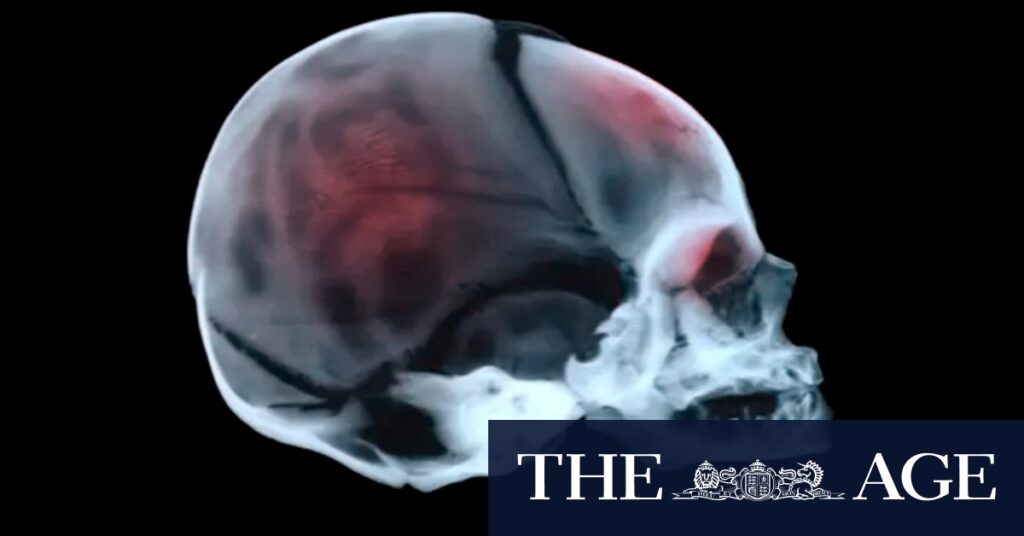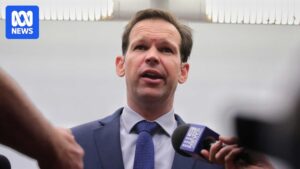
It was an unremarkable October night in Melbourne’s northern suburbs when Kabir gently jiggled his daughter’s chin, trying to prompt the baby to smile for a video he wanted to send to his family back home in India. Just four minutes later, his wife Dipika woke as Kabir hurried into her room. In his arms, their daughter Dua lay limp. They called an ambulance but, facing a delay, raced Dua to the hospital themselves.
“I started giving her mouth-to-mouth. I am not a medical expert, so I thought maybe she’s not able to breathe,” Dipika recalls four years later. “What’s going on? I just … couldn’t understand. I literally thought she’s dying.”
Kabir and Dipika expected their daughter would receive the best treatment possible, and she did. However, doctors also raised suspicions that the parents might have been responsible for her injuries. In the case that followed, police and the child protection service agreed that in the four minutes after Kabir shot that sweet video, he had grabbed his baby and shaken her so violently that blood vessels in her skull and the tissue behind her eyes had started to bleed.
The Controversy Surrounding Shaken Baby Syndrome
The accusation changed the young family’s lives forever. And they’re not the only ones. For decades, families in Australia and overseas have been accused of one of the worst crimes imaginable – child abuse. The podcast Diagnosing Murder delves into the stories of parents who have had their children taken away, sat in the dock, and even done time in prison, all for something they insist they didn’t do – shake their baby.
“I lost everything, and it went on for seven years,” says one young man featured in the podcast. Another asks, “How do I have faith to take my child to a hospital, when the hospital has done this?”
Expert Opinions and Legal Implications
Each case has its own unique story, but in hospital wards and courtrooms around the country, the evidence of a few influential child abuse specialists is still accepted, almost without question. On their opinion, fathers, mothers, boyfriends, and carers are being found guilty of serious charges, including murder, then serving long sentences in prison.
Can we trust the science behind shaken baby syndrome? Or are innocent people being locked up for a crime they never committed? Dissenting voices have begun to emerge in Australia, suggesting that the current approach may be flawed.
“The science is not as settled as some would have you believe,” says Dr. Michael Turner, a forensic pathologist who has testified in several high-profile cases. “There are alternative explanations for the symptoms that are often attributed to shaken baby syndrome.”
Historical Context and Emerging Dissent
The concept of shaken baby syndrome (SBS) first gained traction in the 1970s, when pediatricians began to identify a triad of symptoms – subdural hemorrhage, retinal hemorrhage, and brain swelling – as indicative of child abuse. However, recent research has called into question the reliability of these indicators.
In 2015, a landmark study published in the British Medical Journal suggested that the triad could be caused by a variety of medical conditions, including accidental falls, infections, and genetic disorders. This has led to a growing movement among medical professionals and legal experts advocating for a re-evaluation of SBS diagnoses.
Impact on Families and the Legal System
The implications of these findings are profound. If the current diagnostic criteria for SBS are indeed flawed, then the justice system may have wrongfully convicted countless individuals. This has sparked a debate over the need for reform in both medical and legal practices related to child abuse cases.
“We need to be absolutely certain before we accuse someone of such a heinous act,” argues Sarah Johnson, a legal advocate for families affected by SBS accusations. “The stakes are too high to rely on outdated or disputed science.”
Looking Forward: The Path to Reform
As the debate continues, there is a growing call for more comprehensive research into the causes of the symptoms associated with SBS. Legal experts are also advocating for the inclusion of a broader range of expert testimony in court cases to ensure that all possible explanations are considered.
Meanwhile, families like Kabir and Dipika’s continue to fight for their innocence and the chance to rebuild their lives. The conversation around SBS is far from over, and its resolution will require collaboration between medical professionals, legal experts, and policymakers.
As new evidence emerges and more voices join the conversation, the hope is that justice will prevail for all families affected by these serious accusations.







